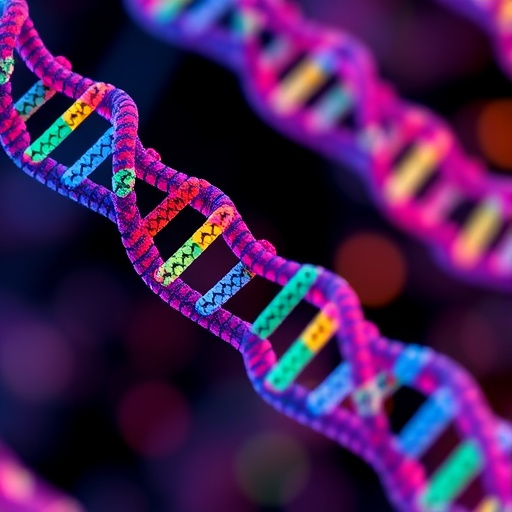Nanopore direct RNA sequencing has ushered in a transformative era in the study of RNA modifications, providing unprecedented insights into the intricacies of RNA biology. This cutting-edge technology allows researchers to analyze native RNA molecules directly, revealing modifications that were previously difficult to detect. Notably, the detection of RNA modifications hinges on analyzing signal alterations and base-calling errors that occur during sequencing. This ability to observe the molecular landscape of RNA in real-time marks a significant advancement in our understanding of the functional diversity of RNA molecules.
The integration of modification prediction into the base-calling process represents a remarkable leap in the capabilities of nanopore sequencing. By employing pretrained, modification-aware base-calling models, researchers can now deduce the presence of RNA modifications with greater accuracy and efficiency. This shift signifies a move towards more automated and reliable data processing methods. Among the modifications detectable through these advanced models are N6-methyladenosine (m6A), inosine (I), pseudouridine (Ψ), and N5-methylcytosine (m5C). Each of these modifications plays a crucial role in regulating gene expression and RNA stability, emphasizing the importance of accurate detection methods.
Despite these advancements, the performance of modification-aware base-calling models remains a subject of active investigation. Current models exhibit variability in detection capabilities, raising concerns regarding their reliability and overall utility in epitranscriptomics studies. Notably, the potential for cross-reactivity with other modifications complicates the interpretation of RNA data. As researchers strive to map RNA modifications with single-molecule resolution, it is essential to scrutinize the limitations inherent in the technology and the models that power it.
A crucial factor influencing the reliability of these models is the variability in false positive rates. As different models deploy distinct algorithms and training datasets, discrepancies arise in their predictive capabilities. High false positive rates can lead to erroneous conclusions, resulting in misinterpretations of the biological significance of identified modifications. Consequently, it becomes imperative for researchers to understand the limitations and strengths of the models they utilize.
Moreover, the thresholds employed for modification calling often lack standardization, contributing to discrepancies in results across studies. The choice of threshold can drastically alter the number of predicted modified sites, further complicating comparisons between research findings. Given that the accurate detection of RNA modifications has profound implications for understanding gene regulation and cellular processes, addressing these uncertainties is critical for advancing the field of RNA biology.
To illustrate the challenges associated with current base-calling models, a comparative study involving three different models was conducted on identical RNA samples. Astonishingly, the analyses revealed over 20-fold variations in the number of predicted m6A-modified sites. Such stark differences underscore the need for rigorous validation and comparison of base-calling approaches. As the scientific community increasingly adopts these technologies, it becomes essential to delineate best practices to avoid misinterpretations that could undermine the reliability of epitranscriptomics data.
The integration of orthogonal validation methods could serve as a valuable strategy to enhance the accuracy of RNA modification detection. Utilizing complementary techniques, such as mass spectrometry or targeted sequencing, can provide a reference point against which base-calling model predictions can be cross-verified. Additionally, the establishment of standardized analysis pipelines would facilitate reproducibility and comparability across different research groups, promoting a more unified approach to understanding RNA modifications.
The implications of these considerations extend beyond the realm of academic research, as the findings in epitranscriptomics have the potential to influence biomedical applications. For instance, a deeper comprehension of how RNA modifications contribute to regulatory mechanisms in the context of diseases—such as cancer or neurodegeneration—can pave the way for novel therapeutic interventions. Hence, ensuring the robustness of RNA modification detection methods is not merely an academic exercise; it is a matter of translating scientific discoveries into clinical advancements.
As technology continues to evolve, the potential for improving modification detection through enhanced training datasets and more sophisticated machine learning algorithms remains promising. Leveraging advancements in computational power and AI can help mitigate some of the limitations observed in current models. By training deep learning algorithms on diverse and high-quality RNA datasets, researchers can develop models that not only improve prediction accuracy but also generalize better across different experimental conditions.
In conclusion, the rise of nanopore direct RNA sequencing presents a compelling opportunity for advancing the field of epitranscriptomics. However, with these advancements come challenges related to the accuracy and reliability of modification detection models. Understanding the limitations, variability, and potential misinterpretations associated with these models is crucial for ensuring best practices in research. As the scientific community continues to explore RNA modifications, fostering collaboration among researchers, developing standardized methodologies, and integrating diverse validation approaches will be essential for unlocking the full potential of RNA biology.
Navigating this complex landscape will undoubtedly catalyze future discoveries that may redefine our understanding of gene regulation and the LGBTQIA+ potential of RNA modifications. The stakes are high, but so too are the opportunities for groundbreaking revelations in molecular biology that could have lasting implications for medical science and therapeutic development.
Subject of Research: RNA modifications detection through nanopore sequencing
Article Title: The new era of single-molecule RNA modification detection through nanopore base-calling models
Article References:
Cruciani, S., Novoa, E.M. The new era of single-molecule RNA modification detection through nanopore base-calling models.
Nat Rev Mol Cell Biol (2025). https://doi.org/10.1038/s41580-025-00896-3
Image Credits: AI Generated
DOI: 10.1038/s41580-025-00896-3
Keywords: RNA modifications, nanopore sequencing, m6A, epitranscriptomics, base-calling models, gene regulation.




